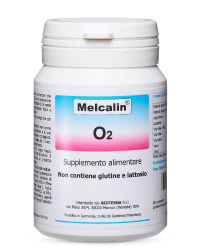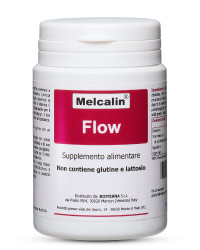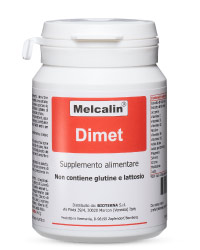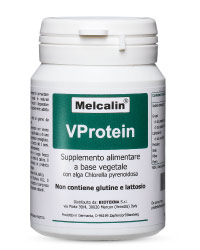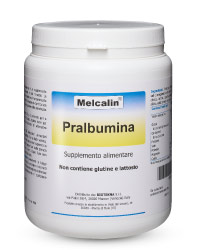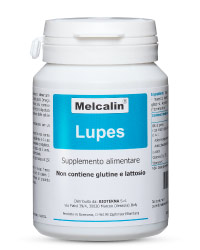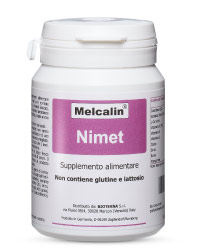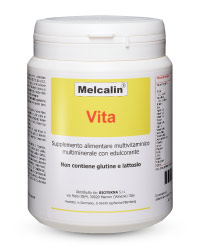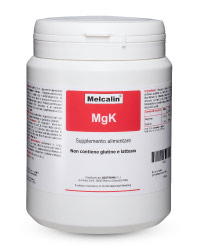Introduction
The metabolic processes that take place inside our body lead to continuous variations of pH to a continuous succession of intake-elimination of “acid” and “bases” which determines changes in the concentration of the hydrogen ion (H +) with consequent variation of the organism’s pH that must cope with these changes and maintain the physiological pH (pH 7:38 to 7:44).
The metabolism of carbohydrates and fats produces 15,000 mmol CO2 per day (volatile or respiratory acidosis) and the metabolism of protein leads to the formation of sulphuric acid and phosphoric acid (Non-volatile acidosis) therefore, in order to maintain the acid-base homeostasis, body features some mechanisms to guarantee it:
– Buffer systems:
- Bicarbonate – carbonic acid (HCO3–/H2CO3) – Melcalin Base
- Dihydrogen phosphate – dibasic (HPO42-/ H2PO4–) – Melcalin Base
- Proteic Buffer System (Albumina) – Melcalin Pralbumina
- Hemoglobin go to “Transport of oxygen and chelation of heavy metals” – Melcalin O2
- kidney regulation systems (non-volatile acidity)
go to ” further information about tissue extracellular pH and PRAL, GL, inflammation and stress: clinical evidence”
volatile acidity control, breathing techniques,biofeedback of the Autonomic Nervous System – ANS BF PPG stress
Acidosis
Acidosis means a functional alteration due to excess of hydrogen ions (H+) in the extracellular fluid with a consequent decrease of the reserve buffer; this alters all the metabolic processes of the cells, since it is necessary, for their correct operation, the maintenance of a perfect balance and a relationship between the production and excretion of Acid and alkaline substances. The main organs responsible for this task are the kidney and the lungs. The respiratory acidosis is an increase in of carbonic acid in the blood, as a result of a decreased elimination of carbon dioxide through the lungs as a result of reduced ventilation; non-volatile acidosis is an increase in production by the body of acidic substances that are released into theextracellular environment (catabolites).
Respiratory or volatile acidosis
The cellular metabolic activity leads to the formation of carbon dioxide (CO2) that spreads from the cells to the interstitial spaces and from there into the bloodstream.
CO2 + H2O Û H2CO3 Û H+ + HCO3–
Lung Kidney
The carbon dioxide passes into red blood cells and through carbon dioxide, there is the formation of H2CO3 which dissociates into hydrogen ions (H+) and bicarbonate ions (HCO3–); dissociated hydrogen ions are buffered by haemoglobin and bicarbonates are transported into the plasma. In the lungs the entire sequence is repeated in reverse to which reform the carbon dioxide that is released in the alveolar air. The volatile acidosis derives from an altered lung ventilation that may be caused by: limited lung expansion (physical inactivity, poor aerobic fitness, inadequate breathing technique, obesity), airway obstruction (obstructive lung disease), disorders of gas exchanges (pneumonia, pulmonary edema), inhibition of the respiratory centre (opiates, barbiturates, anaesthetics), neuromuscular disorders (multiple sclerosis).
Non volatile acidosis
The non-volatile acids (or fixed), are substances produced in small quantities from the catabolism of amino acids; once produced, they remain in solution until they are excreted by the kidneys. The most important are the sulfuric acid (H2SO4) deriving from the oxidation of the sulfur contained in the sulfur amino acids (methionine and cysteine) and phosphoric acid (H3PO4) resulting from the hydrolysis of salts and phosphates introduced with food.
Fixed acidosis concerns the increase in the production of fixed acids due to metabolic deviations: intense physical exercise, lipoperoxidation phenomena, prolonged fasting, diet that prefers “acid” foods such as proteins and carbohydrates (PRAL positive diet), fever, alcoholism, diabetes, ketosis, shock.
Mixed Acidosis
The modification of the pH affects both the volatile and non-volatile acids.
Buffer systems
The addition of acid or basic substances, even in small doses, to a solution, causes a marked change of the pH, however, if such addition takes place in a solution in which there is a buffer system the pH variation is minimal. This is because the buffer systems are compounds which possess the property of containing, within very narrow limits, the pH changes upon addition of small amounts of acids or strong bases. For example, the addition of 0.01 mole of hydrochloric acid (a fraction of a gram) to a liter of water, produces a pH change from 7 to 2, while the addition of the same amount of acid to one liter of buffer solution produces an almost irrelevant pH change.
Non-volatile acidosis is due to the presence of acid catabolites that are dissociated by releasing hydrogen ions in body fluids; these ions are captured by the following buffers:
- Bicarbonate System / carbonic acidbicarbonati/acido carbonico
with the sulfonic acids, this type of buffer releases hydrogen ions and leads to the formation of water, carbon dioxide and salt from non-volatile acid according to the reaction:
H2SO4 + 2NaHCO3 → Na2SO4 + 2H2O + CO2
sulfuric acid
this system allows the maintenance of the physiological values of pH due to the regulation of the pressure of the carbon dioxide through pulmonary ventilation, the excretion of hydrogen ions and the bicarbonate ion reabsorption in the kidney.
2Na2HPO4 + H2CO3 → 2NaH2PO4 + 2NaHCO3
monophosphate Na diphosphate Na
In the phosphate buffer system, the monophosphate ion, when in contact with the hydrogen ion, into the extracellular environment, is transformed into bisphosphate ion, thus minimizing the variation of pH.
Solutions to fight acidosis
As mentioned, the respiratory and renal function and the buffer system of the organism interact to control the pH of the organic liquids with extreme precision; When tampons are saturated or altered, or there is kidney damage or respiratory failure, the pH exceeds those limits by determining the onset of acidosis sinthoms. Temporary fluctuations of pH are frequent and in most cases are quickly recovered but if the situation that has determined the disturbance persists, the pH can be altered. There are many causes which determine a condition of imbalance of the system acid-base: the most serious concern pathological conditions such as certain CNS diseases involving the respiratory and circulatory reflex, but there are others that belong to everyday life and that may expose us to this condition: stress and alcohol, intense sport, smoking, sedentary lifestyle, inadequate fluid intake, prolonged use of medications, excess of acidifying foods such as meat, cheese, cold cuts or insufficient intake of alkalizing foods (fruits, vegetables).
One of the first solutions, in case of mild acidosis, is represented by a correct diet which consists in the intake of adequate amounts of fruits and vegetables (basic foods); recently, a correlation has been noticed between high consumption of fruits and vegetables and bone health index: indeed various diseases can be prevented or stopped in their progression through alkalinity conditions in the body. This result is obtained with intake of fruits and vegetables because these food groups in digestion are oxidizedand form carbonic acid which dissociates from carbonates (eg. Sodium carbonate) (see “PRAL, GL, inflammation and stress: clinical evidence and glycemic load table -PRAL maximum value “) and then form the buffer elements unlike proteins and carbohydrates which lead to the formation of acidic substances.
However, the contemporary diet is rich in carbohydrates, sodium, and is poor in fruits and vegetables, fiber, magnesium and potassium, and also contains excessive amounts of products of animal origin, as a consequence not metabolizable aninoni are produced, the amount of which increases progressively with aging because of the physiological decline in renal function; a buffering agents supllementation becomes therefore desirable (Melcalin BASE).
It is important to fight against a condition of acidosis because it may cause a variety disorders: chronic fatigue, sleep disorders, joint pain, increased susceptibility to allergies, frequent inflammations. However, the most interesting topic that relates to the acid-base balanceperhaps is the osteoporosis: the bone tissue plays an important role in balancing the body pH, as it is itself a buffer against acidosis; conditions of acidosis are associated with bone demineralization (reduced Bbuffer see BIA-ACC), hypercalciuria and negative balance of calcium. In our body, with sufficient amount of base to buffer the formation of acid metabolic waste, everything works perfectly, but if this does not occur, the body must make use of the reserves that it owns despite usually those reserves have other features, such as phosphates and carbonates in the bones that have structural function; draw from this source leads to decalcification that may obviously lead to increased bone fragility and hypercalcemia. In a therapeutic orientation, therefore, in order to cope with this situation, the assumption of an appropriate supplementation with phosphate and bicarbonate buffer systems becomes essential: to restore the pH is a strategy which has priority over the reinstatement of calcium, whereas this could already present an excessive plasma concentration precisely because of an ongoing bone demineralization.
Benefits with buffer systems
The effectiveness of the use of buffer substances is demonstrated by scientific literature which analysed the benefits of such substances in various fields from sports to pathological conditions such as tumours.
Sport: the intake of sodium bicarbonate has proven to be advantageous, especially in terms of performance improvement, in particular in sport performances of short duration and high intensity work (boxing, swimming). The benefits are found both with acute intake (half an hour before the activity) and with continuous use (better results than with acute intake).
Gastrointestinal system: carbonates (also known as antacids) were used for disorders such as non-ulcer dyspepsia, minor episodes of heartburn (gastro-oesophageal reflux disease), stress gastritis and gastro-oesophageal reflux, gastric and duodenal ulcers. Their effect on the stomach is due to the partial neutralization of the gastric hydrochloric acid and the inhibition of the proteolytic enzyme, the pepsin.
Oncology: the tumour microenvironment (extracellular space) is an acid zone because of a overregulated glycolysis and a reduced blood perfusion; there is a growing evidence that the extracellular acidity increases the invasiveness and metastatic ability of cancer cells, also this acidity makes these cells relatively resistant to chemotherapy drugs and can prevent immune rejection. Studies have shown that increasing the extracellular pH has been able to improve the therapeutic efficacy associated with a reduction of the metastatic process and a best response to some cytotoxic agents.
Degenerative diseases of the skeleton: the oral administration of potassium bicarbonate at a dose sufficient to neutralize the endogenous acid improves the balance of calcium and phosphorus, reduces bone resorption, increases the rate of bone formation and increases the content calcium in the bones (this is important both in terms of prevention and treatment of osteoporosis). To confirm the positive action of bicarbonates several studies have documented a reduction of bone resorption after introduction of bicarbonate (or following a diet with strong negative PRAL ): an oral administration of potassium bicarbonate improves the balance of calcium and phosphorus, reduces the bone resorption and increases the rate of bone formation while the ingestion of sodium bicarbonate alkalinizes urine and reduces the increase in urinary calcium excretion, which occurs in conditions of acidosis, so the result is a net balance of positive calcium.
It is thus demonstrated the positive action of bicarbonates on our health; in the formulation of BASE Melcalin there are not only the bicarbonates but also the phosphates (both buffer elements of our organism and fundamental components of the bone) in order to obtain a more complete action.
Alcaline Food Supplement Melcalin® BASE (buffer system supplement)
Melcalin® BASE It is a alkaline supplement which provides the proper amount of both the phosphate ion and bicarbonate ion, the major constituents of tampon systems, associating the intake of important minerals such as magnesium and potassium. The choice of a high sodium content, in the form of sodium bicarbonate is due to the scientific documentation which shows that the intake of sodium bicarbonate is associated with the increase of calcium ion retention.
It has been shown how the intake of sodium bicarbonate is able to prevent the loss of calcium, essential for a good maintenance of bone homeostasis.
The supplementation with only calcium is not a successful strategy to counteract osteoporosis because, as stated, the acid environment leads to a decrease in pH with a consequent: – destructuration of bone mass which consists primarily of phosphates and carbonates, which in the acidic environment are more soluble, and – entrance into circulation of calcium ions. A calcium supplementation can therefore only result in an increased risk of stone formation. The best strategy is implemented therefore through a healthy lifestyle that includes movement, a proper and varied PRAL negative diet (rich in fruits and vegetables) to which you can combine the use of the food supplement Melcalin® BASE that supports the maintenance of the acid-base balance of the organism encouraging the correct intake of buffer minerals essential for the maintenance of the physiological pH.



